Sound
The Earsonics guys describe the ES5’s sound as follows:
Mastery of sound, generous bass, realistic and convincing spacialization, high precision of details, the absolute reference for a listening of all styles: Rock, pop, jazz and electronic music. An impressive yet accessible approach to music, in-ears that will make you shiver.
Earsonics also always uses a chart to describe the sound in an easy to read graph and for the ES5 it looks like this:
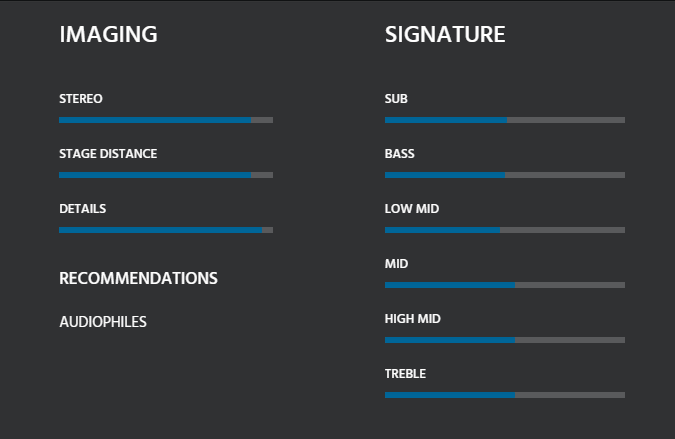
From the picture you would say the ES5 is very linear as bass, mids and treble all three have a “medium” rating, but in reality I would say the ES5 sound signature is a little different to my ears.
The ES5’s tuning is neutral yet musical. When listening to it for the first time you’ll remark the clean sound, excellent dynamics and the gorgeous vocals. The ES5’s sound stage width is good but it’s wider than it is deep. The level of separation is good and the presentation is airy and spacious enough, yet it is mostly so in the mids. The level of detail overall is good, clarity is excellent and the left/right balance is exemplary. This makes the ES5 a very natural and precise IEM.
Bass, mids and treble are tight, clear and fast and you get everything with a perfectly black back ground. Some people call the ES5 v-shaped in sound signature but I would rather describe it as a light v-shape. Let me explain: in a normal v-shape you have bigger bass and treble than you have mids, or said in other words, the mids are in the back. With the ES5 however, the bass presence really depends on the track you’re listening to and the source used. So it kind of floats between v-shaped and more linear, and that’s why I’m calling it a light v-shape.
Bass is tight, precise and fast but it depending on the file and source can be somewhat lighter in body. It has a good punch to it with a nice impact and quality-wise it is very good. Bass doesn’t easily reach down very low though and the rumble and layering maybe are a bit lacking. In this regard it shows Earsonics is only using one single BA driver for the bass. To me the bass reproduction is still more to the neutral side, yet as said, it does depend on the quality of the track you’re listening to and the source/amp used. But more on that later when we match it with different sources.

Bass and lower mids perfectly connect and the mid bass has the same characteristics the bass has. The mids, and more precise the upper mids, is where the ES5 for me really shines. The mids are the most spacious sounding and they have excellent dynamics. Detail wise the mids don’t disappoint and they have the most lovely timbre, extension and clarity to them. Layering is quite good but it’s clear the ES5 will never be the most layered IEM.
The upper mids and treble indeed have this more forward tuning typical of the v-shape sound signature. If you like clear mids and treble with good extension and great vocals, then the ES5 will certainly be an IEM you’ll like. Treble has great precision, speed and clarity and is furthest extended. At the same time Earsonics managed to keep the treble part harsh-free and musical, so there’s no complaining there. If you’re a fan of soft and rolled off tubed treble, then this isn’t the IEM for you. The ES5 is just the opposite, and I mean that in the most positive way.
Portable Player Matching
The Astell & Kern SP1000 is a detail king and that’s immediately noticeable in combination with the ES5. The SP1000 is also known for its tight, lighter bodied bass and excellent upper mids and treble. So basically the SP1000 has more or less the same characteristics the ES5 has. The result? Great speed and precision, excellent dynamics, really good vocals and a tight punchy bass. If you’re looking for bigger bass or thicker mids then the SP1000 isn’t the DAP to combine this IEM with. If you however like the tonality of the ES5 as it is, the SP1000 and ES5 combo will show you audio heaven.
That other TOTL DAP, the Sony NW-WM1Z, is famous for its full bodied sound and warmer approach and when used as source with the ES5, that does show. This is one of the sources I was talking about earlier, as it ads bass body and overall presence. You get a bigger, fuller sound (also in the mids) with good depth and a lot of detail. The bass, mids and treble are soft, smooth and musical. The presentation is effortless, musical and rich. You get a completely different sound compared to the SP1000 and I’m having a hard time deciding which tuning I like most. I think that most people will prefer the softer, thicker tuning of the Sony though.
The Luxury & Precision L6 is the newest L&P DAP and it’s based on the LP5 Limited Edition 199. If there are two things we know about L&P it is that they absolutely nailed the sound part in all their previous players and that their user interface basically sucks. Well not much has changed since we reviewed the last L&P DAP, the ES5 sounds extremely good with the L6 as source and you kind of get a mix of both the SP1000 and the WM1Z, yet at a lower technical level. With the ES5 that means you get good bass in presence and impact, full sounding, rich mids and lively energetic treble. You don’t get the detail level of the previous DAPs or the layering, but the ES5 an L6 combo is the most pleasant and addictive for my ears. It’s incredibly musical while still retaining the detail, clarity and precision. Again, an excellent job from L&P, the L6 is a great match for the ES5.

The latest AK70ii also (still) is a warmer, smoother and musical player. The main difference with the original AK70 is that it’s scoring better on technicalities. With the ES5 you get a full bodied sound, with a nice impactful bass and rich mids. The presentation is soft and musical with excellent natural vocals. Treble is soft yet dynamic. To me this is one of the DAPs that give the ES5 the biggest bass and mid body, but I wouldn’t call it v-shaped as the mids also have good thickness from the AK70. This is a combination that is very easy to the ear, with a kind of baby L6 tuning.
That other DAP of the moment is the excellent sounding Cayin N5ii of which we had the world premiere last December. The ES5 and N5ii combo sounds faster and more energetic than the AK70ii pairing. You get more focus on the upper mids and treble section, comparable to that of the AK SP1000. The level of detail and precision is really good but in combination with the N5ii that v-shaped signature is more audible. This certainly is one of the DAPs to pair the ES5 with if you’re in to upper mids, vocals, classical music or treble.
So in the end there isn’t really one good or bad pairing. They all influence the ES5’s sound in their own way and it comes down to what sound signature you like. My personal favorite for private listening would be the L&P L6 as it’s a nice mix of the SP1000 and WM1Z, with a higher level of sound as the N5ii and the AK70ii.
Amplification
With its 33Ω impedance and 117dB sensitivity the Earsonics ES5 really doesn’t need an external amplifier to perform, but if you have one already, I’m pretty sure you’ll use it. Two of the most popular portable amps nowadays are the Chord Mojo and Hugo (2) and it’s impressive to see they have almost blown away all of the competition with these two models.
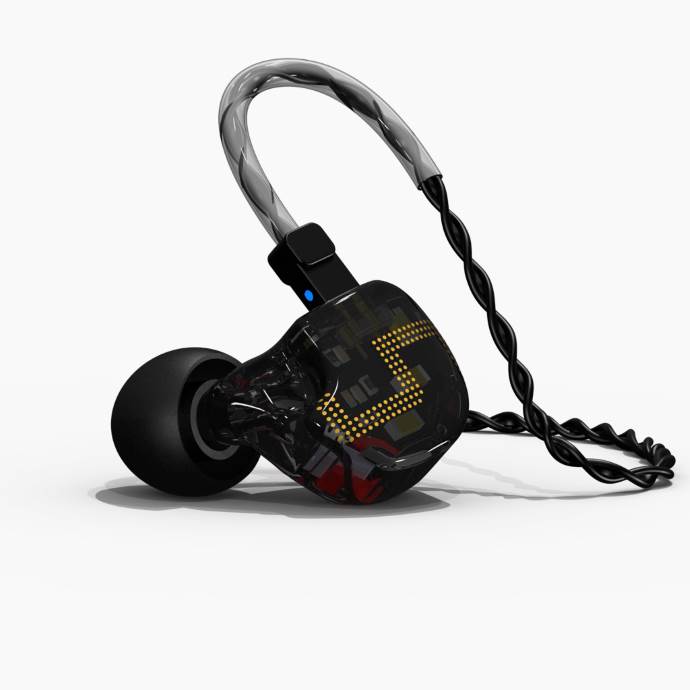
From the award winning Hugo 2, the Earsonics ES5 sounds very fast and precise. You get a wise sound stage with excellent separation and great detail. I do call this the typical digital sound signature but it’s musical as well. You get a more neutral kind of sound with a tight (lighter) bass, incredibly good (fast) mids with great dynamics and energetic treble that’s never harsh. I really like the combination as it sounds clean, detailed and musical all in one.
The ES5 & Mojo combo is tight, fast and detailed with great dynamics. To me it sounds a bit more digital than the Hugo 2 and the separation, depth and layering are a level lower. Bass is lighter like with the H2 and you get a neutral kind of tuning where the upper mids and treble are the most noticeable.
The Lehmann Audio Drachenfels is a small desktop sized amplifier and so far it’s been excellent with all the ear- and headphones I’ve thrown at it. The ES5 has reasonably good body in bass and mids and you get a softer, smoother approach compared to the Chord units. The delivery is very natural with great vocals, treble is a bit softer but the overall presentation is easygoing and a pleasure to listen to for long periods.
Cable & Balanced
When switching the stock cable to the Effect Audio Leonidas cable in balanced mode (2.5mm termination & 4.4mm adapter) you logically get a modified sound signature.
SP1000: you get a deeper and more layered bass, more spacious and layered mids, a wider sound stage and softer treble. I personal prefer the ES5 & SP1000 combo in balanced configuration, although the v-shaped sound is more audible here.
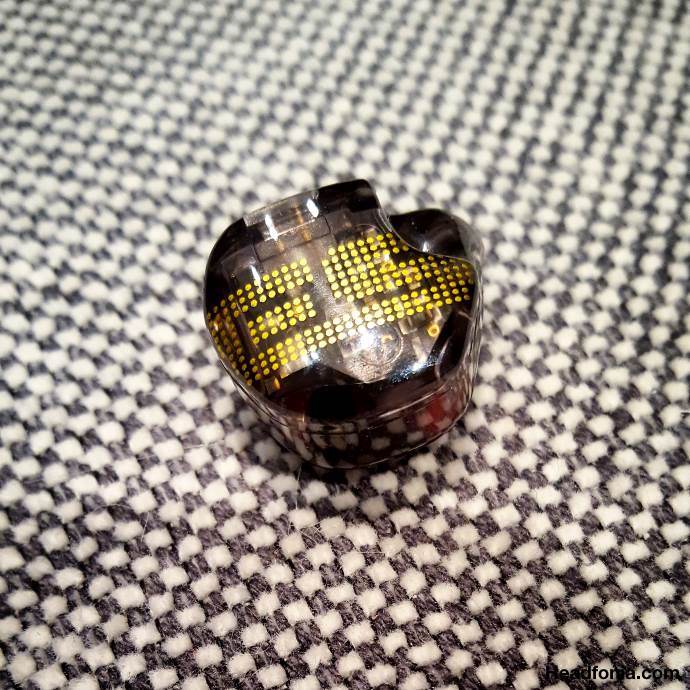
With the Sony WM1Z that results to even more bass and for me it’s a bit much. You do get thicker mids compared to the SP1000 though. The general presentation still is smooth and soft with thicker body overall and soft treble. I prefer the WM1Z & ES combo in single ended mode.
AK70ii: we more or less get the same story as the bass impact now is rather huge and overpowering the rest. This isn’t really a signature I like though bass heads might get a kick out of it, I don’t. The AK70 and ES5 combo works better in single ended mode.
With the Cayin N5ii you get a better balanced sound with a more spacious presentation and a softer touch. The ES5 and N5ii combo in balanced sounds musical yet fast and precise. You get good extension on both ends with a tight bass, rich musical mids and energetic, slightly softer treble. I prefer it over the SE config.
L&P L6: In balanced mode you get an even more spacious sound, relaxed presentation and excellent extension. Depth and layering are really good in balanced mode. Bass is a bit lighter yet has better quality, the mids are extremely rich and treble is detailed and energetic yet musical. Treble does seem to be a tad softer on the ear though. I haven’t really made up my mind which signature I prefer most, but I think I’m leaning towards the single ended config.
Conclusion
It took me a while to get to get used to the typical Earsonics ES5 sound but once I found the right source(s), it’s been nothing but a pleasure listening to these IEMs.
Yes, the ES5’s signature and the v-shaped presentation depends on your source used and the quality of the files in your library, but if you get it right it simply is an excellent inear.
For the price there maybe could have been more accessories but you are getting a fully “made in France” product that took a lot of R&D to develop. If you’re a fan of the ES2 and ES3, then I’m sure you’ll love the ES5. The ES5 certainly made me an Earsonics fan.
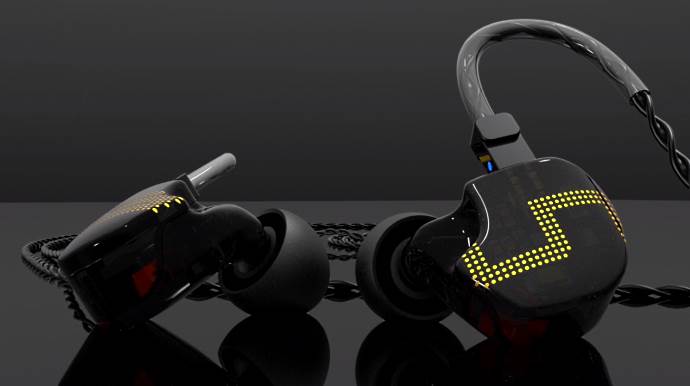





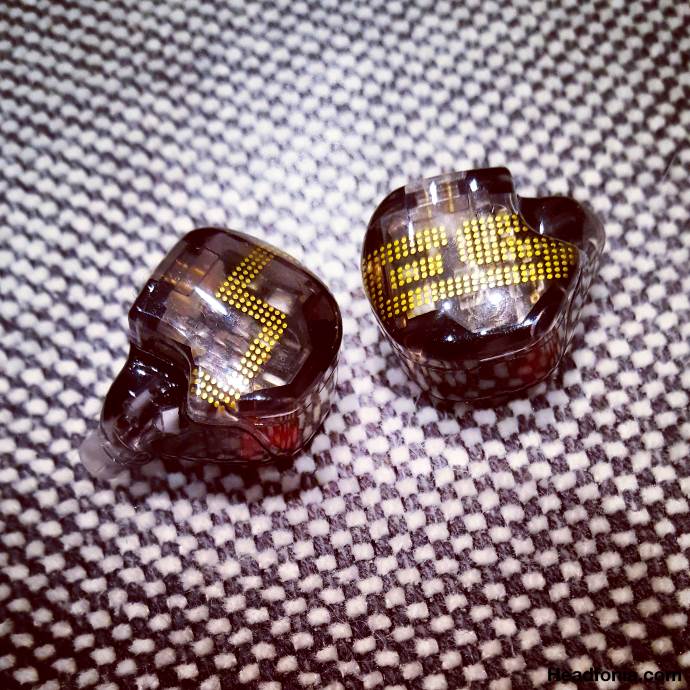
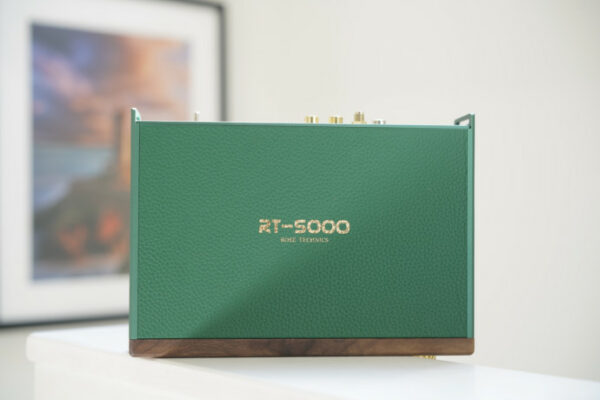
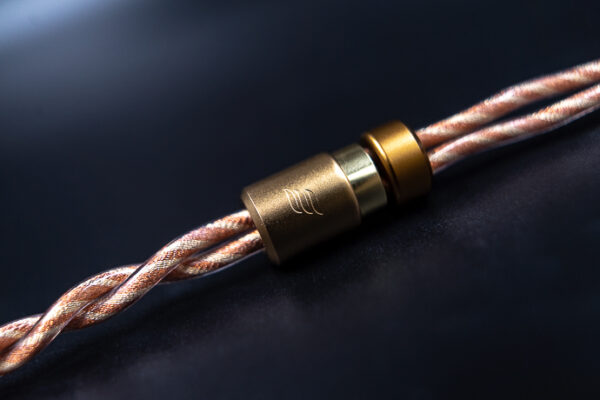
Ryan
Hi which do you prefer, this or the t8ie mk2, thanks
Lieven
I’d have to say the AK/Beyer. they’re just a level up
René
I´d like upgrade my EarSonics Velvet…
Can you write more about comparsion ES Velvet vs ES ES-5,please?
Differences in frequencies and so on.